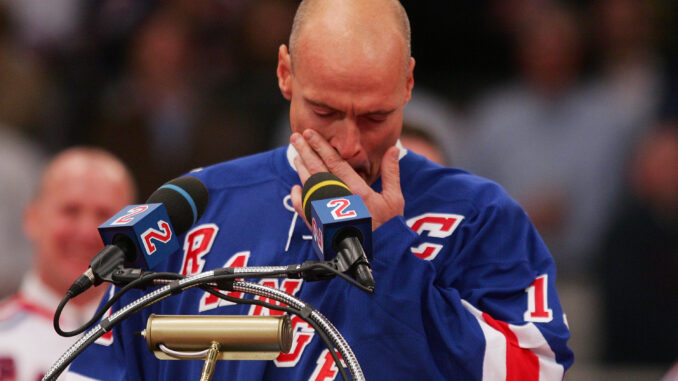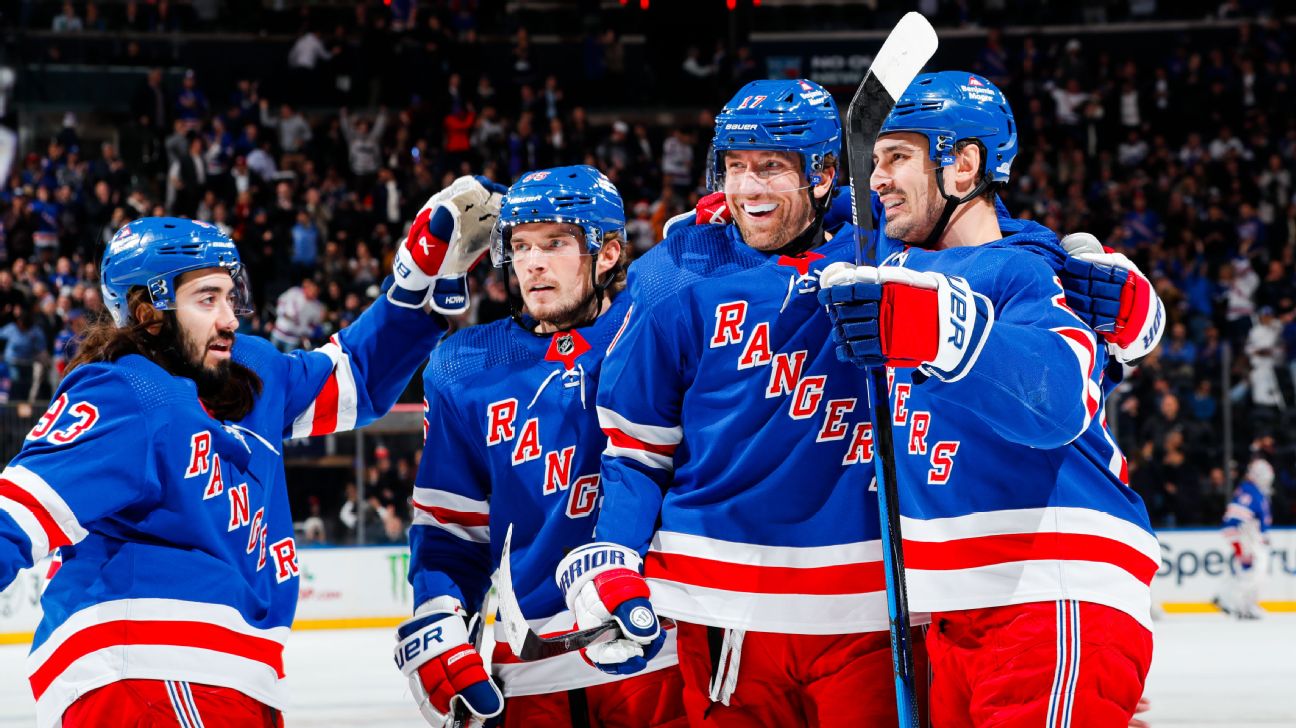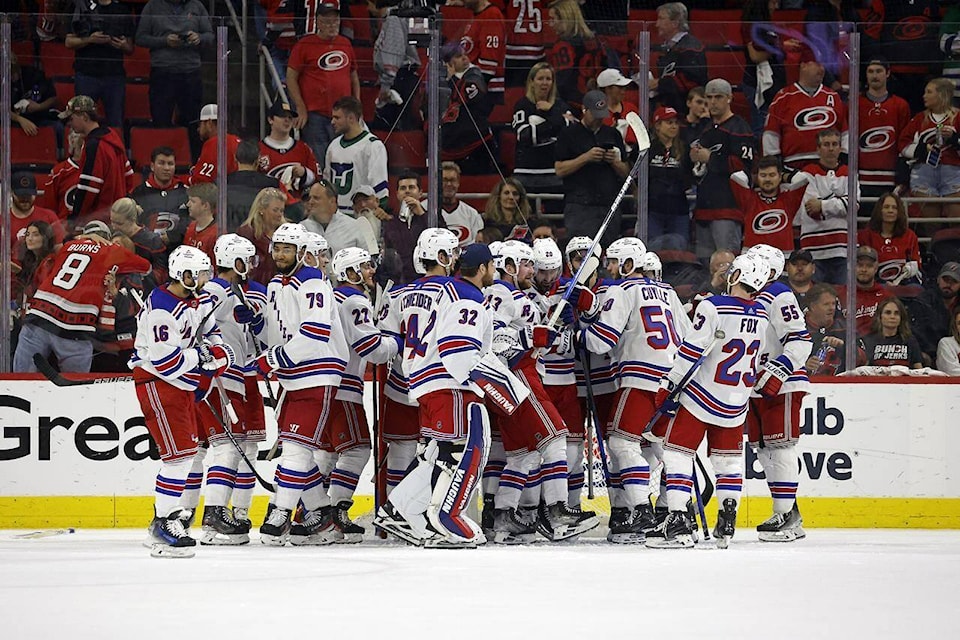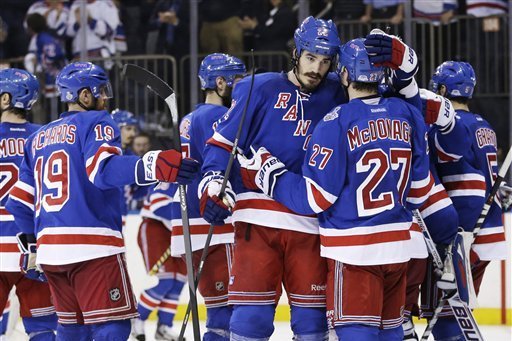
Under the bright lights of New York, where all 32 teams aim to win the Stanely Cup, expectations are nearly always high. Without a doubt, the Rangers have had some incredible runs during the previous ten or more years, but they haven’t been the champions. Not only was that objective not accomplished in the 2000s, but in the previous eight decades or more, the organization had only won one Stanley Cup.
The task isn’t easy, of course. Everything needs to be perfect, from maintaining good health to having top-notch special teams. To find out which Rangers squad had the highest chance of winning the Stanley Cup, let’s take a look back at some of the best teams from the 2000s.
2011–12

The Rangers were primarily a club that, once the Henrik Lundqvist era started, would just about make the playoffs before the 2011–12 season started. After replacing Tom Renney as manager in 2009, John Tortorella shaped the team’s reputation as a diligent, forechecking unit that could stop shots. The athletes adopted this fearless approach. Regretfully, the Rangers’ talent was nowhere near as good as that of some of the best teams in contention.
Road Trip: New York Rangers
Brad Richards (Icon SMI/Rich Kane)
But when Brad Richards joined the Blueshirts as a free agent, things took a different turn. Fans were given hope that the Rangers might have a team designed to win the Stanely Cup for the first time, maybe since the 1990s, for the first time in a long time. They played a great regular season in 2011–2012, winning 51 games and taking first position in the Eastern Conference. By doing so, they would be assured home ice for the first three playoff rounds.
The depth at forward was the only area of worry for the 2011–2012 squad. With 76 points (41 goals), Marian Gaborik was the top scorer, followed by Richards with 66 points. All other players had 54 points or fewer. This became clear when the Rangers lost the series 3-2 after being shut out at home in Game 5 of their playoff series against the Ottawa Senators in the first round. Notably, Gaborik was concerned with the department of wings. Ruslan Fedotenko, Ryan Callahan, and rookie Carl Hagelin were thin. It was not the best situation.

Chris Kreider, the Rangers’ best prospect at the time, was one significant reinforcement that was on the way, though. After graduating from college, he signed with the team right before the postseason started, making his debut in the first round’s Game 3. But in Game 6 against the Senators, he scored what would turn out to be the game-winning goal, making an impact when the Rangers needed it most. Additionally, the group would rally to win the series in seven games (from New York Post, April 11, 2022, “Former first-round pick Kreider signs with Rangers”).
The Rangers sorely needed Kreider’s electrifying speed when he was cutting the wing. He demonstrated it in Game 1 of the next round against the Washington Capitals, blasting a slapshot past Braden Holtby to lead 1-0. The remainder of the series was a back-and-forth affair with no clear winner. Nevertheless, Richards’ goal with 6.6 seconds remaining in regulation time in Game 5—which set up Marc Staal’s overtime winner—was the pivotal moment that gave the Rangers a commanding 3-2 series lead.
The Blueshirts would win the series in seven games, but their inability to win in six could have marked the beginning of the end for their postseason hopes. They eventually caught up to the volume of games (which included back-to-back Game 7 series) after they led the New Jersey Devils 2-1 in the Eastern Conference Finals. The group ran out of steam and lost the remainder of the series. Although it was a difficult game to lose, their lack of offensive strength and powerplay might have hurt them in any case. However, being tired all at once wasn’t helpful. The 2011–12 squad lacked a key component while being strong.
2021–2022

Within ten years, a lot can change. It’s interesting to note that, after writing this well-known letter to their supporters in 2018, the Rangers decided to rebuild and disassemble the core, leaving only Kreider from the 2012 playoff squad. However, things were beginning to turn around when they advanced to second overall and won a draft lottery, earning them Kaapo Kakko and Alexis Lafreniere, respectively. Then, with highly-touted goalkeeper Igor Shesterkin already in the pipeline, the Rangers would trade for Adam Fox, the winner of the Norris Trophy. Not to mention, in 2019, Artemi Panarin signed a free agency contract, which accelerated the renovation.
The Rangers aimed to advance and return to the postseason when Chris Drury was appointed general manager and hired Gerard Gallant as head coach. In an effort to strengthen the experienced presence, among of his initial actions before the 2021–2022 season started included acquiring Ryan Reaves and signing Barclay Goodrow.
It helped, at least temporarily, even though some people had doubts about the deals and how they might effect the Rangers going forward. By the trade deadline, it was almost certain that the Blueshirts would make the playoffs. Drury moved as a buyer, acquiring Frank Vatrano, Andrew Copp, and Tyler Motte. The top six forwards benefited from the latter of the two changes. The exceptional special teams of this Rangers club set them apart from earlier postseason-qualified teams. Both teams placed among the top three NHL teams at the conclusion of the regular season.
As the second seed in the Metropolitan Division, the Rangers held home-ice advantage against the Pittsburgh Penguins before the tournament got underway. As the group didn’t yet have the expectations of being a Cup favorite, it was hoped that they could win one series. However, the Rangers were losing the series 3-1 and were on the verge of collapse after four games. They would trail in each of the following three win-or-go-home games, but they would come back to win the series seven games to none. To pull off an exciting series victory, Mika Zibanejad and Panarin’s power play and stellar performances in elimination games were sufficient. Not to be overlooked are Shesterkin’s outstanding goaltending and the impromptu youth line that included Lafreniere, Kakko, and Filip Chytil.

And then again, following a difficult Game 5 defeat, the Rangers faced elimination in round two against the Carolina Hurricanes. But later in the series, the Blueshirts would win it in seven games thanks in large part to their power play. The Rangers unexpectedly found themselves in the Eastern Conference Final. Additionally, in contrast to the last two series, they dominated play right away against the Tampa Bay Lightning, taking a 2-0 lead thanks to home-ice advantage. After the Rangers scored two goals in the second period of Game 3, they appeared to be headed to the Stanley Cup Final thanks to their continued success with the power play. They were leading the series 2-1 and just 20 minutes away from securing a 3-0 lead over the defending Stanley Cup champions. However, the squad collapsed in the third period and lost with just seconds remaining in regulation, so it was too good to be true. The team was unable to bounce back from it, which was the ultimate buzz kill.
After two exciting seven-game series, the Rangers ran out of gas once more. A lot of hockey was played. Even if the team exceeded expectations, it’s difficult to accept that they lost Game 3 and realize how close they were to qualifying for the Cup. If that wasn’t the worst defeat in the team’s history, it certainly ranks highly. Still, you had to be hopeful about the future and what you saw from Shesterkin and the youth line if you were a fan of the Rangers.
2023–2024
The next season would be a mystery, with supporters unsure of what to expect after a disastrous season in which the Rangers went all in by adding Patrick Kane and Vladimir Tarasenko, only to be eliminated by their rival New Jersey Devils in the first round. Was this squad destined to fail, or would they be able to move past 2022–2023 and succeed?
Laviolette Peter, New York Rangers
Bruce Bennett/Getty Images photo of New York Rangers head coach Peter Laviolette
The biggest change made by the front management was replacing head coach Gerard Gallant with Peter Laviolette. Although he wasn’t a surprise choice that thrilled the supporters, he was well-liked in the league, had coached more than 1,500 NHL games, and had a Stanley Cup ring on his record. Laviolette was far more hands-on than his predecessor, which was a big difference. He gives his players rigorous workouts and emphasizes paying close attention to detail. Although it wasn’t immediately apparent if he would be a good fit for the position, he would be given the opportunity.
Drury’s limited cap space presented another difficulty throughout the offseason. Erik Gustafsson, who would establish himself as a mainstay in the third defensive pairing, was the most noteworthy free agent acquisition. Recall that the Rangers were compelled to give younger players like Kakko and Lafreniere greater playing time since Kane and Tarasenko would not be coming back. Laviolette was compelled to make it work under unimpressive conditions, and to his credit, he succeeded. Thanks to the extended role the new coaching staff found them, Lafreniere ultimately developed into the player Rangers supporters all dreamed the 2020 first-overall pick would be.
The Rangers, who had led the Metro for much the whole season, were having a fantastic season. After Chytil was ruled out for the remainder of the regular season, Drury would acquire Alexander Wennberg prior to the trade deadline in order to secure the third-line center position. The 47-year-old general manager also acquired Jack Roslovic with the intention of lining up alongside Kreider and Zibanejad on the top line. They both satisfied important demands, but neither was a standout performer.
The decisions helped the Rangers defeat the far worse Washington Capitals squad in three games to capture the Presidents’ Trophy and a favorable first-round matchup. When combined with a goalkeeper talent that spans generations, the Capitals were unable to compete with the best special teams. It was anticipated that the next round versus the Hurricanes would be more difficult. And it was, even after the Blueshirts, once again buoyed by outstanding goaltending and special teams, swept to a 3-0 lead following three close victories. The Rangers avoided the reverse sweep and will now host the Florida Panthers in the Eastern Conference Finals after the Hurricanes gave them a scare in Game 6.
What would happen to the Rangers if the power play stopped working was the issue. In the series against the Panthers, though, we got a taste of that. Even with a 2-1 lead, the Blueshirts never seemed to be in control of the series. Although they had their moments, the Rangers were unable to play for more than an hour each night. The Panthers simply have superior equipment that was unmatched. New York and their defensemen, especially those who were unable to get the puck up the ice to the forwards, were under constant pressure from the strong forecheck. And, deja vu: after having a 2-1 series lead, another Eastern Conference Final was lost. The Panthers’ unit scored five goals while the power play managed just one.
Without a doubt, the Rangers in 2023–2024 had a fantastic team, but the Panthers were simply better. Although disappointing, that is the how things work. If the Rangers had possessed an above-average puck mover or another offensive-minded defenseman, perhaps the series would have turned out differently. Furthermore, Zibanejad and his line should take a lot of the heat for their inability to spark anything.
2014–15
It may go unnoticed by some that the squad from 2014–15 was another squad to win the Presidents’ Trophy this century. In his second season as head coach, Alain Vigneault made a few significant adjustments this year. Among these include the addition of Tanner Glass following the trade of Derek Dorsett in the winter, and previous general manager Glen Sather substituting Dan Boyle for the lost Anton Stralman. Even while it was painful to lose Benoit Pouliot, Kevin Hayes, a college free agent, effectively took his position.
Glass undoubtedly made the fourth line worse, but as a point man, Boyle enhanced the power play. Still, after the Rangers made it to the Cup Final the year before, hopes were raised. The Rangers lived up to the hype, and the skill was there to make another run.
Sather made the decision to strengthen his roster and add a key player before the trade deadline after his team easily won the most of the regular season. It was Yandle, Keith. Although the offensive defender was a needed addition, the trade of top prospect Anthony Duclair and a future first-round choice was a dangerous one. For a player who would play on the Rangers’ third pair, it was a steep price to pay. Remember when the Rangers acquired Martin St. Louis in exchange for two first-round selections the previous season? Sather was all in, though.
The Pittsburgh Penguins, led by Sidney Crosby, advanced to the first round of the playoffs, and the Blueshirts were aided in winning the Presidents’ Trophy by the Yandle trade. The Rangers were the better team, even if the series was close. To his credit, Marc Andre Fleury performed admirably. Carl Hagelin’s overtime goal sealed the series victory, and they won in five games.
The Rangers’ first game versus the Capitals in round two was a slugfest. The club led by head coach Barry Trotz suffocated New York by executing a game plan. In the final minutes of the third round of Game 5 at MSG, the Rangers were behind 3-1 and in danger of losing. Goalie Holtby of the Capitals was excellent for almost fifty-eight minutes. Subsequently, Kreider tied the score with a seemingly innocuous shot from the top of the Capitals circle. Then it was win-or-go-home (or stay-at-home, for that matter) overtime, and Ryan McDonagh proved to be the season-extending captain.
The Rangers appeared to be hopeless, yet they had all the momentum after turning defeat into victory. With goals from Rick Nash and Chris Kreider among their best players, the Blueshirts erupted in Game 6 and forced a Game 7 at MSG. Following an early deficit, youngster Hayes would tighten things up on the power play. It was a closely contested defensive game that went into overtime. Furthermore, the Rangers, who were among the NHL’s worst face-off teams that season, had an offensive draw after the halfway point. The goal of the set play was to return the puck to Yandle so that Dan Girardi could score on a one-timer. Holtby tried to retrieve the puck, but the rebound found Derek Stepan staring at an open net. It didn’t go in. Warning: This is a spoiler notice. One of the best goals in Rangers history, the Stepan didn’t miss the net.
The Rangers appeared to be poised to make a Cup Final comeback. The hashtag #ChangeTheEnding was even utilized by the team’s social media account. The next team in the Eastern Conference Final would be the youthful yet skilled Tampa Bay Lightning. The Rangers had home-ice advantage and were down 2-2 in the series more than halfway through. However, Game 5 did not go their way as Ben Bishop blanked the Rangers at MSG. Despite the difficult setback that seemed to be the end of their season, the squad bounced back with a decisive 7-3 victory led by Derick Brassard’s five-point performance. However, a return trip to the Cup Final was still not in the cards after the Rangers lost badly in Game 7 after being shut out at home once more.
The Rangers ultimately failed for two main reasons. One was their inability to score goals during the postseason. Nash has trouble getting the puck into the net on a regular basis, especially St. Louis. When your highest-paid scorers aren’t your greatest, it’s difficult to win. Furthermore, there would have been no Eastern Conference Final or Game 6 in Washington if not for Kreider’s heroics in the second round.
The injury bug was another factor, which might have been the main one. McDonagh suffered a foot break in Game 4 against the Lightning, to start with. The captain bravely played through it, but the injury seriously hindered him afterwards. He was practically ruled out of the seventh game. Following an upper body injury in the opening round, Mats Zuccarello was sidelined for the remainder of the postseason. Girardi and Yandle, two defensemen, played despite sprained shoulders and MCLs. Additionally, Marc Staal continued to play despite a minor ankle fracture. And it doesn’t include Kevin Klein, who missed the whole first round of the playoffs due to a broken arm sustained at the end of the regular season.
In conclusion, the Rangers’ defensive core was nearly completely unsupportable, and their most cunning winger was out of the lineup. The fact that the battered team advanced to a Game 7 is astounding. To King Henrik, all hail. The worst part was that with Henrik Lundqvist, McDonagh, and Nash in the core, this was the last chance this team would have to fight for the Stanley Cup. It’s unfortunate because every aspect of the season, from defense to special teams to five-on-five, was evenly distributed.
2013–14
The Rangers of 2013–14 were the finest team the franchise has had since the 1994 Stanley Cup winners, pound for pound. The two biggest offseason transactions were a one-year contract for Pouliot and Vigneault’s replacement of Tortorella. The head coach, who was born in Quebec, advocated for a fast-paced style of play that emphasized switching from neutral zone defense to counterattacking. The secret was to get odd-man rush opportunities up the ice and drive opponents into mistakes.
Alain Vigneault
Alain Vigneault, the former head coach of the New York Rangers (THE CANADIAN PRESS/AP/Gene J. Puskar)
Even though Vigneault’s new approach will bring about thrilling times, the 2013–14 regular season got off to an absolutely disastrous start. The Rangers lost their next three games, being outscored by a staggering 20-5, following a 1-1 start to their season. The record fell to 2–6, as the season began to spin out of control. Fortunately, they would rally and triumph in the following six games. A few specific factors were very important in accelerating the turnaround. One was Cam Talbot’s excellent effort as a backup goalie, who finished the season with an amazing.941 save percentage in 21 games.
The other was summoning Kreider, whose youth provided much-needed vitality to the Rangers. To his credit, Vigneault was able to develop and get ice time for younger players despite having several difficulties with the quick winger. For the majority of the season, Vigneault not only offered the rookie top-six minutes, but he also proved to be a significant net-front presence on the power play.
Though it was a gradual process overall, the Rangers managed to remain in the postseason conversation prior to their January surge. The main problem encountered was the controversy surrounding Callahan, the captain at the time. At the end of the season, the Rochester, New York native was set to become an unrestricted free agent, and the two parties were having trouble agreeing on a new contract extension. Thus, Sather made the decision to package him in a deal for St. Louis and trade him before the deadline. It cost the team two first-round selections, but it made the Rangers serious Stanley Cup contenders.
As a Blueshirt, St. Louis had trouble getting things going for the remainder of the regular season, but he made an impression in the postseason. This was particularly true once the veteran’s mother passed away and tragedy struck. At the time, the Rangers were in a second-round series and up for elimination against the Penguins in Game 5. When St. Louis made the decision to participate, the team exploded with a 5-1 victory. Then, on Mother’s Day, it returned home to MSG, where the Rangers took a 1-0 lead shortly after the game thanks to a goal by St. Louis, of all guys. In an effort to force a Game 7, the Laval, Quebec, native’s teammates came together and secured a 3-1 victory.
However, the return was not quite complete. Nonetheless, it appeared as though the Rangers were in complete control and had even opened the scoring in Game 7. In the second period, the Penguins came charging back to level the score, but Richards responded to give the Ranges the lead again. But you were aware that it would not be simple to end the third session. The Rangers were met with every effort by the Penguins, but Lundqvist would not allow them to score. In Game 7, he gave it everything he had and stopped nearly all 13 high-danger opportunities.
The Rangers would face the Montreal Canadiens in a favorable third-round postseason matchup following their incredible comeback. Max Pacioretty led the Habs in scoring throughout the regular season despite having just 60 points. Carey Price was going to be difficult to solve, even though there wasn’t as much depth and top-line heavy talent as there was with the Rangers. But he would only play in Game 1 due to an unlucky collision that kept him out of the series for the remainder of it. The matchup improved, but Stepan’s broken jaw also meant he had to miss Game 4. Despite lacking a top-six center, St. Louis produced another huge moment in Game 4, winning in overtime to send the Habs to the verge of elimination. After that, the Rangers would triumph 1-0 in Game 6 and would need just four more victories to raise Lord Stanley.

Next up were the Los Angeles Kings. Throughout the series, the Rangers’ speed occasionally proved to be too much for the Kings to handle. The Blueshirts would usually take the lead in contests. There was a problem with Vigneault’s style of play, even though his squad supported it. When his team had a lead, they would become too defensive and allow the opposition to control the offensive zone. In actuality, the Rangers led in each of the three OT losses in Games 1, 2, and 5. The third sessions were horrible. They failed to score in the final 20 minutes of every game, whereas the Kings attacked profusely when they were behind.
Even one of those games may be won by the Rangers. Would the result be different? Numerous near-misses occurred throughout the overtime period, including as McDonagh’s hit post in the crucial Game 5 and Kreider’s breakaway effort in Game 2. Despite their greatness, the 2013–14 team was unsuccessful. It was one of the few Rangers sides this century that had both the ability to control the ball and create scoring opportunities. They came in eighth and seventh, respectively, for Natural Stat Trick’s rankings of predicted goals in the regular season and Corsi. In comparison to the other teams in the league, the power play % was mediocre. For that core with Lundqvist, at least, it was the best opportunity to win a Cup.
Rather, supporters can only hope that 2024–2025 will be the year that the more than 30-year drought ends. However, it hasn’t been easy to see five Eastern Conference Finals and one Stanely Cup Final and lose each time. There’s no denying that winning the Cup is a difficult and drawn-out process.
Leave a Reply